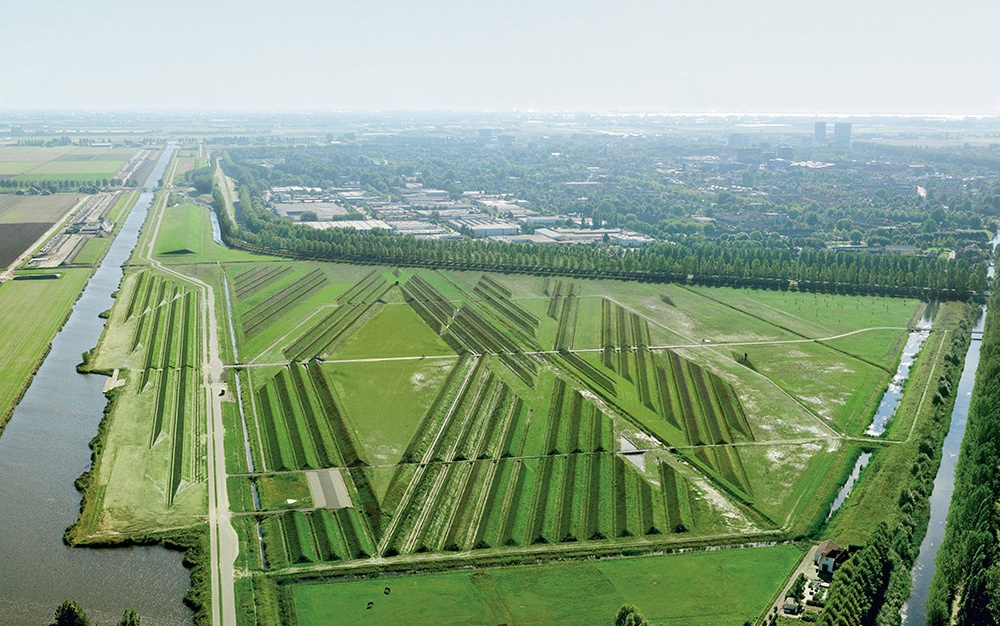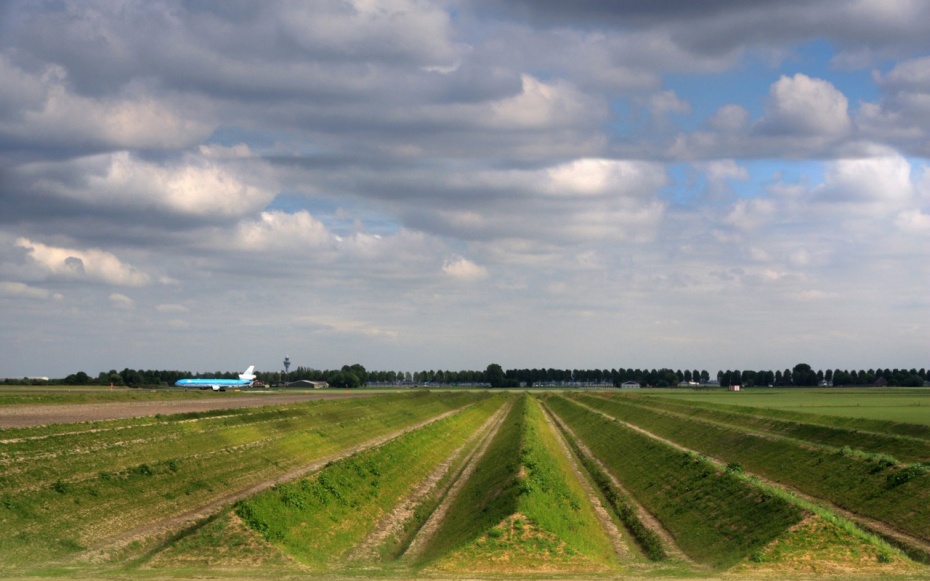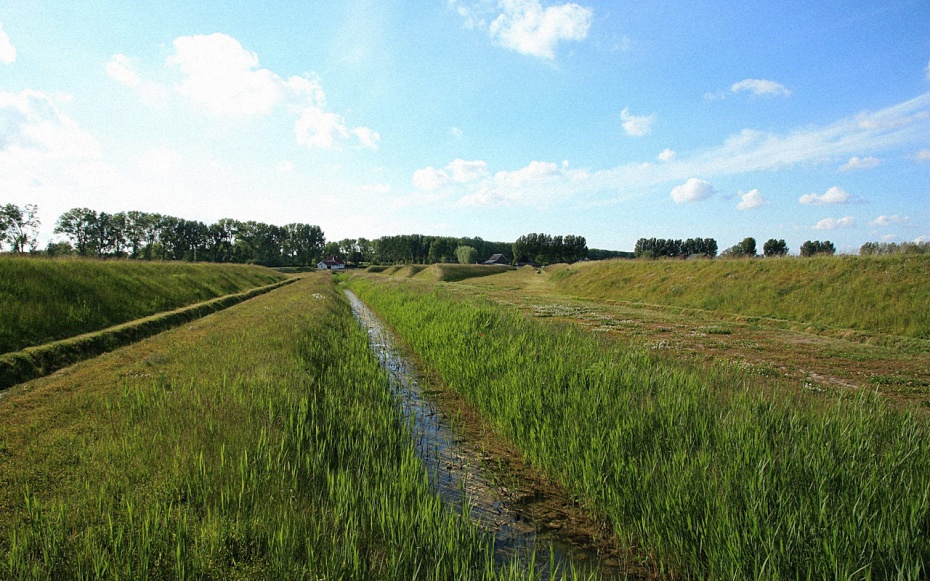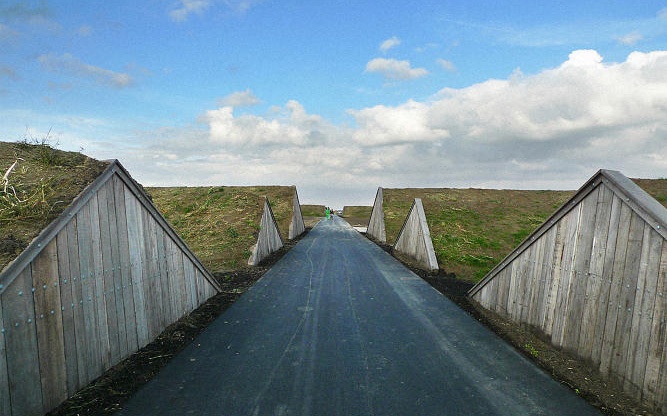
How do you cut down noise pollution around Europe’s fourth largest airport? With land art, of course.
Reduce noise pollution around airports, which has been linked to everything from heart disease to diminished reading comprehension, and you do a lot for the people who live near them. But mitigating the ground noise produced by roaring get engines is tough, because of its low frequency and high wavelength. Noise barriers, of the kind you might see along a highway, would do very little to quiet them. Amsterdam’s Schiphol Airport has found preliminary success by building a park, of all things, full of land art inspired by an 18th-century polymath known for scraping violin bows along metal plates.
The wideness and flatness Schiphol’s site, on what was once the bed of Haarlemmer Lake, is an ideal landscape for landing planes. Those same aspects also make it great at amplifying sound, which Shiphol, as the fourth largest airport in Europe, with some 55 million visitors every year, makes a lot of. In 2008, following reports that locals could hear the low drone of arriving and departing planes from 18 miles away, the airport commissioned a study of area noise levels from the Netherlands Organization for Applied Scientific Research. They found that noise levels decreased in the fall, when farmers around the site plowed their fields into ridges and furrows. So why not make them permanent?
Working with H+N+S Landscape Architects, artist Paul de Kort designed the Buitenschot Land Art Park, which opened in 2013, with 150 ridges, each about 10 feet high and 36 feet wide, that ripple out around a central diamond-shaped field. Though their form was agriculturally inspired, De Kort was looking back to the work of 18th-century scientist Ernst Chladni, who visualized sound waves by covering a metal tray with sand, pulling a violin bow across the edge, and recording the patterns made by the vibrations. “I saw the parallel and thought these ridges are like materialized sound waves,” says De Kort over email. “If one can make sound visible in the form of these ridges, one can make the dimming of sound visible as well.”
The park had to be more than practical, though, so there was some tension between sound-dampening efforts and purely aesthetic ones. Around the large, central field, the ridges converge on the “points” of the diamond, which does little to muffle overhead jet engines, but adds to site fluency. De Koons says this was “an aspect of my design that I had to fight for, for it made the whole project more expansive and complicated.”
For park-goers, there are sports fields and bike paths, but also a number of art installations De Kort incorporated to draw attention to sound, like “Listening Ear,” a large parabolic dish carved into the land that amplifies sound for those standing in it. On the ground, De Kort wanted to arrange a landscape that engenders wandering and discovery, with larger “outdoor rooms” for lingering in.
According to Works That Work, the Buitenschot Land Art Park reduces aircraft noise by 2 to 3 decibels in the surrounding area, an amount that Schiphol hopes to increase in the future, if it can convince local farmers to part with potential parkland. Smithsonian Magazine reported last month that the Melbourne Airport and London’s Gatwick are pursuing similar measures in natural noise reduction. As the mega airport continues its rise, and brings increasing noise-related protests with it, expect to see more parks delineated by what De Kort calls “thresholds of silence.”



More good reads from T+L:
• America's Greenest Cities
• Best Biking Cities on Earth
• In Photos: Japan’s Ultra Competitive Cycling Culture